READER COMMENTS ON
"BuzzFlash Interview with 'Uncounted' Filmmaker, David Earnhardt"
(12 Responses so far...)
COMMENT #1 [Permalink]
...
Larry Bergan
said on 1/29/2008 @ 3:34 pm PT...
As a poll watcher in the 2006 election watching people vote on the Diebold with the magnifying lens and opaque door described above, I can attest to the problems.
I requested to have the doors left open while people voted and was allowed to do so for about 5 minutes before being told the doors "MUST REMAIN CLOSED" by somebody else who had been instructed to close them by a superior.
I watched in frustration all day as about 2% of the people voting knew to open the door. Most pushed the last button to vote and missed their last chance to view their printout as it rolled up into the canister never to be seen again. Lots of people walked up to the judges after voting and said they had heard of problems with the machines and thought they were going to receive a copy. I could not get any of the judges to tell anybody to check the printout before pushing that last button either. I was basically told to sit down and shut up.
"Uncounted" is a great film. Every bit as good as "Hacking Democracy" with some important new faces, (hero's) being interviewed for the first time on film. Make sure everybody you know sees it!
COMMENT #2 [Permalink]
...
KestrelBrighteyes
said on 1/29/2008 @ 3:47 pm PT...
COMMENT #3 [Permalink]
...
neoconvict
said on 1/29/2008 @ 5:57 pm PT...
Hmm. Pelosi shut down Conyers on impeachment. Wonder if she'll let him take on Ohio? We all know it's Conyers passion project. Maybe that was their deal. After all everything in politics is--hands off the impeachment, you can go after Ohio.
Please contribute to Clint Curtis for Congress '08!
COMMENT #4 [Permalink]
...
Phil
said on 1/29/2008 @ 6:24 pm PT...
I was always suggesting that an electronic device be allowed to PRINT a paper ballot to be hand counted.
When I say this I am thinking about people that have no eyes. But I have also said that being disabled doesn't mean that you can screw up the elections for everyone else.
But as Earnhardt so well points out there are problems here as well. It angers me that these manufactures have to go and screw around with this to the point where people can't validate their votes.
I could download a PDF file and print my ballot and have less trouble. But then someone will use bad ink or (WD-40 on the ribbon in a pinch) or some other such stupidity will creep in.
I think the only way to comply with HAVA is to have 100% paper ballots. Great. Where does that leave the disabled?
Either they are going to have to be assisted by someone they trust (loosing transparency, and potentially being scammed if there's nobody to trust) or they are going to have to have faith in some electronic device that assists them to create a paper ballot.
That brings back these rotten evil electronic device manufactures again, who just want to use the cheapest parts and bla bla bla whatever I am sick of it.
I mentioned somewhere here on the bradblog a year or so back that the census data should be used to COUNT the disabled. This way we know how many people need to use these machines. It could probably be done at the time of registering to vote. Granted there will be a few unfortunate people that are crippled between the time the registered and the time they vote, but the Secretary of State should have a ROUGH COUNT of how many are needed.
With that information, a mobile multi-party'd (as in poll watchers from EVERY party dedicated to traveling with the mobile poll) machine could come to their front door.
This machine needs to be simple. It needs to be adaptable, where say someone already has a computer to communicate with the world, then all they really need is a usb / parallel port output. Failing that, a universal human interface device that is created by the government to specific specs should be created. Spare no expense, no low bidder hidden proprietary junk.
Certainly someone will spin these words to try figure out a way to make this fail as well, and if that's the case, then what else is left but to discriminate against folks that are disabled.
So in this scenario, the disabled either ARRIVE at the Secretary of State's special early voting station (my best idea), or they wait for a mobile poll (questionable how that could be rolled out.)
Someone might say they could hack/crack the vote with data on their output port, but that would show up when the paper was printed, with a taskforce made up of every political party working as poll watchers.
Someone might say the disabled computer is broken, from an existing virus or a plethora of other frigging problems, and I'd have to agree.
So what is the answer here? I agree with David Earnhardt all these electronic devices as currently rolled out all suck. But to change that we need to have ideas, brainstorm, and throw out a well thought alternative quickly and accurately.
While I might be able to destroy an electronic tabulation device in 1 second, or really any kind of electronic device in 1 second because of an electronics and programming background, which I believe qualifies me to at least have an input to say that these boxes can never be validated, because the signals are invisible. That's physics, I understand physics, I understand electronics, but I don't know enough about the disabled and the devices they use for communications.
And therefore my knowledge stops.
If someone steps up and says, yeah all these devices the disabled use to communicate with all have USB port or a parallel port, then I can come back in to brainstorm again.
Just like the legal parts of all this insanity as well, I might know the constitution, I might know how the military does stuff, orders stuff, and works on stuff, but I don't know all the pandora's box full of little piddly ass laws in each precinct in each city in each state. They all need discipline in my opinion. Similar to a military discipline.
You can't tell me that out of all of us Americans, we can't create a device that is secure, and has a full chain of custody, that has public oversight, that isn't owned by some corporation or company, that can assist the disabled to print a ballot.
I didn't want to even get started with this thread, for two reasons.
1. I am not at odds with David Earnhardt, although it might sound like it.
2. I am not for electronic vote device manufactures, I think all of them that created this exploitable crap we currently use should NEVER be allowed to contract to make such a device as I am suggesting.
Finally, I don't believe the disabled should be discriminated against, they have a frigging right to vote just like you or I, we might be disabled one day. I am mostly pissed off at the nonsense that these companies have passed off on the unqualified buyers who purchased these machines. In that respect, I would discriminate against say a Secretary of State that doesn't have some basic understanding of electronics, physics, and programming, or know the leadership skills to find people qualified to do the same.
All this nonsense networking needs to go too.
The vote should be hand delivered face to face. You don't know who your talking to on a phone.
Serious problems, need serious solutions. We all can bitch about these machines all day every day and we do, but WHO is SERIOUSLY suggesting alternatives?
There isn't any public advertised place to go to brainstorm to solve these problems. Such a place needs anonymous access. And minimal moderation. But again, these existing companies should not participate. They've already blown it. Their greed has shown they can not participate fairly.
COMMENT #5 [Permalink]
...
the zapkitty
said on 1/29/2008 @ 6:40 pm PT...
... Brad blogged...
"Both they, and Earnhardt deserves the support."
... Brad, what is our children learning?! 
{Ed Note: Wasn't that what is our childrens learning? Thanks. --99}
COMMENT #6 [Permalink]
...
abacus
said on 1/29/2008 @ 7:21 pm PT...
Canada provides - has used for years - a well-thought out, thoroughly accepted process whereby handicapped voters can get human assistance.
What is wrong with a mindset that prefers dealing with a machine to dealing with a human?
COMMENT #7 [Permalink]
...
the_zapkitty
said on 1/29/2008 @ 8:33 pm PT...
... abacus wondered...
"What is wrong with a mindset that prefers dealing with a machine to dealing with a human?"
Actually, nothing seems inherently wrong with the concept... if you are used to thinking of machines as "incorruptible"...
COMMENT #8 [Permalink]
...
Phil
said on 1/29/2008 @ 8:38 pm PT...
This ain't Canada. It's the United States.
I ain't even saying that an electronic device should be used, I am open to comments, suggestions, theories, and dead end ideas when they are proven as bad. I am just saying what little I know about the device I saw, a plastic tube going to a box, then to a computer, the computer had a parallel port to print.
How does Canada deal with disabled voters?
How did we do it in 1950? 1960? etc.
If we all agree the disabled should vote isn't it past time for a task-force to start sorting out HOW that's going to actually happen? What's acceptable, what's not.
You talk about mindset, but then only use the term "machine" What do you mean?
Do you mean the mindset that want's to use an electronic device to send data to a printer to print a paper ballot?
Do you mean the mindset that want's to use an electronic device to tabulate votes?
Do you mean the mindset that want's to send vote data across insecure networks?
Do you mean the mindset that refers to a Machine as a mechanical lever that has no electronics?
This is exactly how terminology is being used against us. We don't know what anyone means.
We need a MILITARY styled discipline, with non-slang terms that get extremely specific. Technical specs that are in plain english. Motorola data book have technical specs in plain English, why can't voting devices? It's like we are all using fuzzy logic and rounding numbers when we are talking to each other. Sometimes rounded numbers are a good thing. Sometimes fuzzy logic is a good thing. But not when it is regarding our constitutional republic.
Anyone notice how diebold.com now has Diebold Premier Services® ?
Try to find Premier Voting Solutions on google.
http://www.google.com/se...=Premier&btnG=Search
You need to go to wikipedia. Then you might get off track to say... http://www.procomp.com.br/defaultproc.asp
But then by reading, change your search a little in google and finally come up with http://www.premierelections.com/ Premiere (Spelling different) Elections (Solutions?!) these guys are hiding . Big time hiding and obscuring names to throw anyone not determined off.
this is such bull. Their first site diebold.com should link to premierelections (note the name runs together? the "e" is in common with two words.) And then there's Adobe Premiere that's nice to muck and hide keywords. I sit here trying to recall old school grammer, i before e except after...c? I can't even spell it.
premier premiere premeir solutions systems elections english Portuguese
Shall we get into etc.?
Election Technology Council (ETC).
/etc/
etc.
ETC.
I had to use a proxy to access their website
http://sneakyjoe.com/nph...tp/www.electiontech.org/
This is literally a mind control exercise.
On that website they have new terms.
Voluntary Voting System Guidelines (VVSG)
Anyone remember VVPAT similar sounding to your mind?
Nevermind. But remember they are "an association consisting of voting system manufacturers in the United States."
They have "guidelines outlining best practices for election officials to adopt" neat huh?
I got some guidelines to outline the best practices for election officials. Really simple, you don't need Adobe Acrobat or Adobe Premeire to read it.
OUTLAW ALL ELECTRONIC VOTE TABULATION DEVICES.
COMMENT #9 [Permalink]
...
the zapkitty
said on 1/29/2008 @ 11:04 pm PT...
Phil, the "Voluntary Voting System Guidelines" are a product of HAVA and the EAC and are basically the e-voting certification measures that were designed to pacify those who had questions about the machines.
Yes... the standards the EAC utterly failed at implementing.
COMMENT #10 [Permalink]
...
abacus
said on 1/29/2008 @ 11:14 pm PT...
Phil #8
"How does Canada deal with disabled voters?"
Here's part of it
A voter there can select a person to act as his/her agent. There is a formal agreement. This person is registered with election officials. The
agreement limits the agent’s action strictly to casting the vote.
Here are some clips from the Canadian “Federal Election Legislation.”
http://www.elections.ca/loi/ref/CEA-LEC_e.pdf
155. (1) If an elector requires assistance to vote, a friend, the spouse, the common-law partner or a relative of the elector or a
relative of the elector’s spouse or common-law partner may accompany the elector into the voting compartment and assist the elector to mark his or her ballot.
(2) No person shall as a friend assist more than one elector for the purpose of marking a ballot.
(3) A person described in subsection (1) who wishes to assist an elector in marking a ballot shall first take an oath, in the prescribed form,
that he or she (a) will mark the ballot paper in the manner directed by the elector;
(b) will not disclose the name of the candidate for whom the elector voted;
(c) will not try to influence the elector in choosing a candidate; and
(d) has not, during the current election, assisted another person, as a friend, to mark a ballot.
(4) No person who assists an elector under this section shall, directly or indirectly, disclose the candidate for whom the elector voted.
S.C. 2000, c. 12, s. 40.
The law has many more sections, covering a wide range of contingencies -
e.g.,
including provisions for taking ballots to the bedside of voters in retirement and medical facilities.
COMMENT #11 [Permalink]
...
Phil
said on 1/30/2008 @ 1:12 am PT...
common sense. Wow enlightening.
Seems like you have a good heart too.
COMMENT #12 [Permalink]
...
abacus
said on 1/31/2008 @ 8:54 pm PT...
Phil #8
Mindset
In a space less focused on current events, I’d be up for a discussion of machine-assisted voting, human-assisted voting, and related concepts. I really did not mean to have that discussion here. But there is a simpler side, which I did aim to touch on. It seems I was too brief.
Many people like the DRE-style voting systems. They score well in many surveys. Imo these systems are inferior to human-assisted voting systems, like Canada’s. especially for handicapped voters. Some of the parameters of the discussion: usability, first cost; maintenance, setup, L&A testing [machines - usually pathetic], storage, BDF programming, audit – and training...
“Mindset: a fixed attitude.” Webster’s.
Your text, Phil, carries an engineering flavor, I come out of Gordon Brown’s MIT feedback control and computer systems programs. So I’m comfortable with hydraulic, mechanical, electrical, analog, digital systems...and, yes, I had a tour with Zadeh’s fuzzy logic. We could maybe agree about one mindset.
At one point I had my hand on the gearshift lever of the transmission of a Rolls-Royce from the 1930s. The designer had fitted it with a ball-bearing detent. The craftsmen who made the parts and assembled them had to be of the old school. Shifting gears was shear kinaesthetic pleasure. Parts moved smoothly, without graininess or hesitation - steel on steel on a thin film of lubricant - until the next position was reached and the ball fell into place and the whole mechanism latched in. See? A mindset that values craftsmanship. The company shared the mindset.
Some in this society value throwaway bright colored plastic assemblies - yes, including voting machines - that wobble when touched, have connectors that malfunction, controls that are often appalling [have you read Neal Runyan’s reports on voting machines for the handicapped?] displays users can’t find without help and can read only with a magnifying glass...a mindset that values cheap and tawdry and doesn’t care about waste.
The makers share this mindset: skimp design; skimp incoming inspection; bamboozle regulatory authority [vastly inadequate anyway - another story] dazzle the prospective customers, negotiate support contracts with provisions aimed at locking customers into dependency - and then failing to deliver parts and service. Snake-oil salesmen’s mndset...
OK?
Now voting systems: a Canadian has vision deficiencies. He goes to vote. Someone is with him to help. There is likely some discussion between them, perhaps, about the election. In any case the voter makes his choices; the other person completes the ballot etc. They shake hands and go their ways, each conscious of the fact that something friendly has happened: a mindset that values our common humanity.
HCPB systems share this mindset.
Our founding revolution was based on: a central idea - the only way people could live free of oppressive governance was to govern themselves; and on the design of the Constitution so we could work together for the common good while protecting each.
I guess I don't have to convince anyone here that the Constitution is being eviscerated...
A mindset: we are in this together.
So not only do we need voting systems that are sound from an engineering perspective; we need restoration of the Constitution...
 Our friends over at BuzzFlash are featuring an exclusive interview with David Earnhardt, filmmaker of Uncounted: The New Math of American Elections, today.
Our friends over at BuzzFlash are featuring an exclusive interview with David Earnhardt, filmmaker of Uncounted: The New Math of American Elections, today. Machine-printed ballots can never be verified, after an election, as actually reflecting the voters' intent, and thus --- except for cases of disabled voters who wish to vote on such devices, as necessary, in order to vote privately and independently --- there is no legitimate reason to use such voting machines. Ever. That is, of course, if such machines even work at all. When they don't, voters can't even cast their votes.
Machine-printed ballots can never be verified, after an election, as actually reflecting the voters' intent, and thus --- except for cases of disabled voters who wish to vote on such devices, as necessary, in order to vote privately and independently --- there is no legitimate reason to use such voting machines. Ever. That is, of course, if such machines even work at all. When they don't, voters can't even cast their votes.

 Kamala Rising:
Kamala Rising: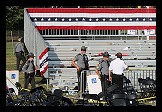 Evidence Fails to Establish Attempted Trump Assass-ination Politically Motivated
Evidence Fails to Establish Attempted Trump Assass-ination Politically Motivated Former MAGA 'Cultist' on the State of the Race for 'MAGA Americans': 'BradCast' 7/23/24
Former MAGA 'Cultist' on the State of the Race for 'MAGA Americans': 'BradCast' 7/23/24  'Green News Report' 7/23/24
'Green News Report' 7/23/24
 Biden Out, Endorses
Biden Out, Endorses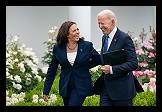 BIDEN DROPS REELECTION BID
BIDEN DROPS REELECTION BID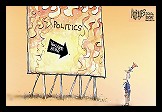 Sunday 'You Are Here' Toons
Sunday 'You Are Here' Toons What J.D. Vance Forgot to Tell You (and Lied About) at the RNC: 'BradCast' 7/18/24
What J.D. Vance Forgot to Tell You (and Lied About) at the RNC: 'BradCast' 7/18/24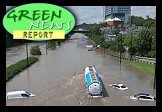 'Green News Report' 7/18/24
'Green News Report' 7/18/24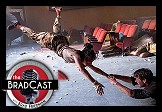 Holding on for Dear Life Amid the Political Whirlwind: 'BradCast' 7/17/24
Holding on for Dear Life Amid the Political Whirlwind: 'BradCast' 7/17/24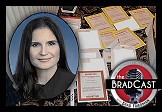 Cannon's Corruption: 'BradCast' 7/16/24
Cannon's Corruption: 'BradCast' 7/16/24 'Green News Report' 7/16/24
'Green News Report' 7/16/24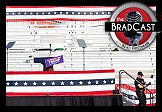 Amid the Assassination Attempt Aftermath:
Amid the Assassination Attempt Aftermath:
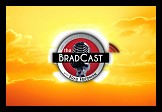 Meanwhile... : 'BradCast' 7/11/24
Meanwhile... : 'BradCast' 7/11/24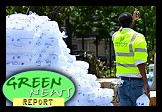 'Green News Report' 7/11/24
'Green News Report' 7/11/24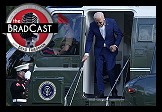 Paging 'Johnny Unbeatable'! Dems (Actually!) in Disarray!: 'BradCast' 7/10/24
Paging 'Johnny Unbeatable'! Dems (Actually!) in Disarray!: 'BradCast' 7/10/24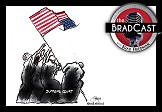 SCOTUS Immunity Ruling 'As Bad as it Sounds', And Worse: 'BradCast' 7/9/24
SCOTUS Immunity Ruling 'As Bad as it Sounds', And Worse: 'BradCast' 7/9/24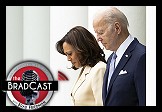 So, What Now?: 'BradCast' 7/8/24
So, What Now?: 'BradCast' 7/8/24 Debunking MAGA Cult Xenophobia
Debunking MAGA Cult Xenophobia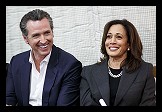 A Friendly Suggestion: Harris-Newsom 2024
A Friendly Suggestion: Harris-Newsom 2024 Prosecutor: SCOTUS Corruption Ruling Less Corrupt Than Appears: 'BradCast' 6/27/24
Prosecutor: SCOTUS Corruption Ruling Less Corrupt Than Appears: 'BradCast' 6/27/24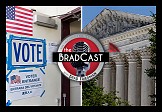 Good News and Bad: At the Polls and From the Corrupted Court: 'BradCast' 6/26/24
Good News and Bad: At the Polls and From the Corrupted Court: 'BradCast' 6/26/24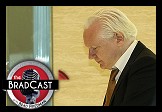 'Emptywheel' on Assange Hacking, Plea Deal: 'BradCast' 6/25/24
'Emptywheel' on Assange Hacking, Plea Deal: 'BradCast' 6/25/24
 VA GOP VOTER REG FRAUDSTER OFF HOOK
VA GOP VOTER REG FRAUDSTER OFF HOOK Criminal GOP Voter Registration Fraud Probe Expanding in VA
Criminal GOP Voter Registration Fraud Probe Expanding in VA DOJ PROBE SOUGHT AFTER VA ARREST
DOJ PROBE SOUGHT AFTER VA ARREST Arrest in VA: GOP Voter Reg Scandal Widens
Arrest in VA: GOP Voter Reg Scandal Widens ALL TOGETHER: ROVE, SPROUL, KOCHS, RNC
ALL TOGETHER: ROVE, SPROUL, KOCHS, RNC LATimes: RNC's 'Fired' Sproul Working for Repubs in 'as Many as 30 States'
LATimes: RNC's 'Fired' Sproul Working for Repubs in 'as Many as 30 States' 'Fired' Sproul Group 'Cloned', Still Working for Republicans in At Least 10 States
'Fired' Sproul Group 'Cloned', Still Working for Republicans in At Least 10 States FINALLY: FOX ON GOP REG FRAUD SCANDAL
FINALLY: FOX ON GOP REG FRAUD SCANDAL COLORADO FOLLOWS FLORIDA WITH GOP CRIMINAL INVESTIGATION
COLORADO FOLLOWS FLORIDA WITH GOP CRIMINAL INVESTIGATION CRIMINAL PROBE LAUNCHED INTO GOP VOTER REGISTRATION FRAUD SCANDAL IN FL
CRIMINAL PROBE LAUNCHED INTO GOP VOTER REGISTRATION FRAUD SCANDAL IN FL Brad Breaks PA Photo ID & GOP Registration Fraud Scandal News on Hartmann TV
Brad Breaks PA Photo ID & GOP Registration Fraud Scandal News on Hartmann TV  CAUGHT ON TAPE: COORDINATED NATIONWIDE GOP VOTER REG SCAM
CAUGHT ON TAPE: COORDINATED NATIONWIDE GOP VOTER REG SCAM CRIMINAL ELECTION FRAUD COMPLAINT FILED AGAINST GOP 'FRAUD' FIRM
CRIMINAL ELECTION FRAUD COMPLAINT FILED AGAINST GOP 'FRAUD' FIRM RICK SCOTT GETS ROLLED IN GOP REGISTRATION FRAUD SCANDAL
RICK SCOTT GETS ROLLED IN GOP REGISTRATION FRAUD SCANDAL VIDEO: Brad Breaks GOP Reg Fraud Scandal on Hartmann TV
VIDEO: Brad Breaks GOP Reg Fraud Scandal on Hartmann TV RNC FIRES NATIONAL VOTER REGISTRATION FIRM FOR FRAUD
RNC FIRES NATIONAL VOTER REGISTRATION FIRM FOR FRAUD EXCLUSIVE: Intvw w/ FL Official Who First Discovered GOP Reg Fraud
EXCLUSIVE: Intvw w/ FL Official Who First Discovered GOP Reg Fraud GOP REGISTRATION FRAUD FOUND IN FL
GOP REGISTRATION FRAUD FOUND IN FL


































